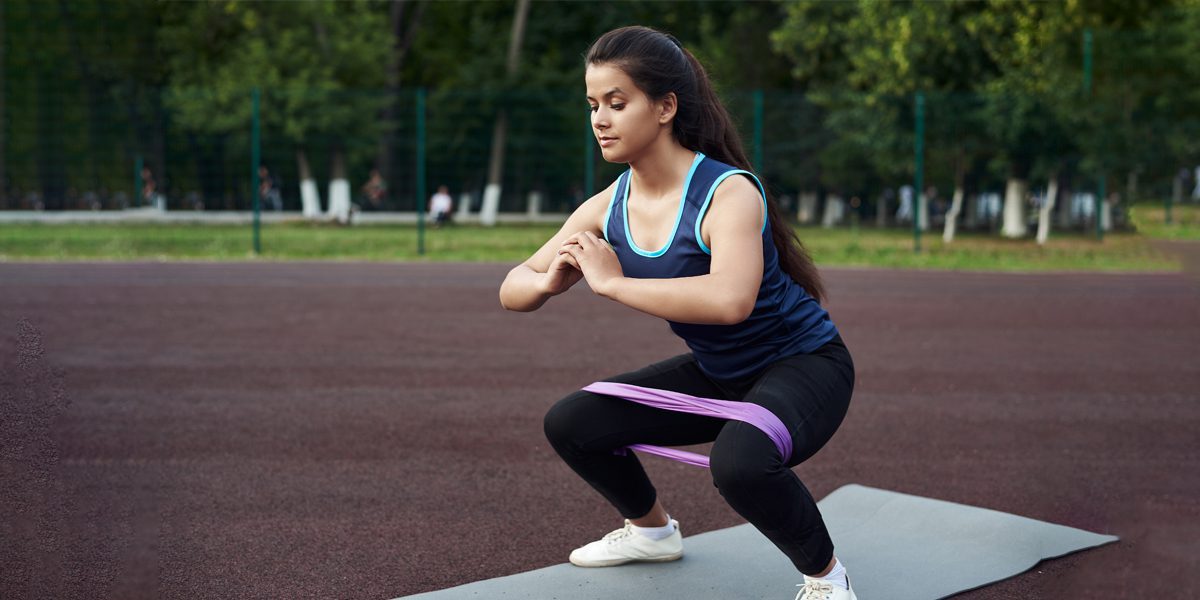22 Tips to Keep Diabetes in Control in 2022

With the new year is just around the corner, you’re probably looking to make positive changes to your lifestyle – one of them being better blood sugar control. If that’s true, this is the blog for you! Read on
Why you should turn a corner in diabetes management
When your blood sugar levels or diabetes is not controlled with the right lifestyle changes and medications, it is termed uncontrolled diabetes (when your blood sugar levels are above 180 mg/dL or higher). Uncontrolled diabetes can have severe short and long term effects on your body, including complications such as diabetic ketoacidosis, heart attack or stroke. And can affect everything from your nerves to your blood vessels and vital organs too.
Diabetes: How to control
So, if your goal for 2022 is to reign in your blood sugar levels and control your diabetes, then here are 22 easy and quick tips to keep your diabetes in check
1. Manage stress:
If you’re under a lot of stress or are stressed often, you should find a way to deal with stress better such as talking to a friend, confidant or loved one, listening to some music, or maybe even stepping away to get some time to yourself.
Why:
When you’re stressed, your body produces and releases cortisol, the stress hormone. Cortisol interferes with the functioning of beta cells (the insulin-producing cells); this lowers the amount of insulin produced and can cause your blood sugar levels to spike.
2. Keep a stress squeeze ball handy:
One way to keep your stress in control and at bay is to keep a stress ball near you. So whenever you get that feeling of being overwhelmed or stressed, reach out and squeeze the ball to get some relief. Sounds simple but it works!
Why:
Stress is terrible for your blood sugar levels. Like we mentioned above, stress impacts your blood sugar levels by decreasing insulin production. Also, the stress hormone (cortisol) when released causes your blood sugar levels to rise.
3. Try deep breathing:
Take some time off in the day to do some deep breathing. Practising it once or twice a day can be beneficial for your stress and blood sugar levels. Here’s how you can practice it:
- Lying down, with your hands by your side,
- Close your eyes and,
- Take five to 10 deep breaths, while holding it in for a few counts before you breathe out.
Why:
A recent study[1] found that deep breathing can help lower your blood sugar levels and even help reduce stress, which helps keep your blood sugar levels in check.
4. Try meditation:
Another good way to manage your stress better is to try meditation. Practising it once a day for just about five to 10 minutes, can make a huge difference in your ability to manage stress better.
Why:
Meditation is calming, reduces stress and helps keep your blood sugar levels in check. As per another study [2], deep breathing and meditation help lower your blood sugar levels and lower your risk of heart disease.
5. Sleep:
It is recommended that everyone gets seven hours of undisturbed sleep every night. But, if you’ve been diagnosed with diabetes, you’re probably likely to have some amount of disturbed sleep – whether it’s because of poor sleep hygiene habits or diabetes-related factors such as sleep apnoea ( a condition where you have trouble breathing when youre asleep) , frequent urination, etc.
Why:
Not sleeping enough at night tends to leave you feeling tired throughout the day. And, to overcome that feeling of fatigue, you could be tempted to overeat carb-heavy meals. This, in turn, causes a rise in your blood sugar levels – something that, again, keeps you up at night. Also, lack of sound sleep at night could make you take long naps during the day, which can then interfere with your night’s sleep cycle.
6. Don’t use your mobile phone or laptop before bed:
Keep your phone away at least one hour before your bedtime. You could read a book, do some deep breathing, or even have a calming, warm bath before you’re ready to go to bed.
Why:
When you use your phone before you go to bed, the blue light these devices emit interfere with your circadian rhythm (a natural, internal cycle that regulates your sleep-wake cycle) and cause difficulty falling asleep. This prevents you from getting restful sleep which then affects your blood sugar levels.
7. Avoid checking work e-mails and messages first thing in the morning and just before bed:
Skip looking at your laptop or mobile phone just before bed and first thing in the morning to check your office messages and emails. You could even schedule and start and cut off times for checking work messages and emails – ideally an hour before sleeping and an hour after waking up to ensure you shut down well before bed.
Why:
Checking your work-related messages or emails just before bed or when you wake up can make you very anxious and send your mind racing. So, shut down your laptop and get some much-needed rest.
8. Take a walk as you speak on the phone:
With the new norm of working from home, taking calls or attending meetings throughout the day is very common. So, while you take a call or attend a meeting, try to walk around your workspace –be it in the room, or maybe even step out for some fresh air. Of course, make sure you’re not presenting, speaking or have to take down notes during the meeting.
Why:
This is a great way to stretch out your legs, get some fresh air and complete your daily step limit.
9. Change your morning walk route:
Going for a walk in the morning can be a repetitive and tedious process. But you can make it fun without doing too much – change the route that you walk.
Why:
Not only will it give you something new to look at while walking, but it may even challenge you with respect to the terrain. Also, if you have something new to explore or a new place to go to, you might be more interested in actually going ahead and getting that walk done.
10. Cut salad before you start cooking:
Eating salad with your meals is essential to keep your blood sugars in check. But in most cases, cutting the salad can be forgotten. It’s simply something you’d rather not do at the end of cooking a whole meal. So it’s a good idea to get it out of the way before you start cooking.
If you have a cook, ask them to remember to cut the salad, that way, it’s something they have to do, and will also remind you that your salad is ready.
Why:
Salads are great for your blood sugar levels; they are packed with fiber, vitamins and micronutrients that work wonders to prevent a blood sugar spike. So adding them to your meal is perfect for better blood sugar control.
11. Check if your plate/ meal has these five things:
When you sit down to eat, a quick and easy way to ensure a diabetes-friendly meal is to check for these five things on your plate:
- Fiber such as green leafy vegetables, salads, chia seeds, nuts and seeds
- Healthy carbs that are in the right proportion such as vegetables, daals, whole grains and tubers.
- Whole grains such as barley, brown rice, oatmeal
- Legumes or daals
- Low-fat dairy products such as whole milk
Why:
Very often, making sure you eat right, especially while you’re on the go, can be difficult. So as a quick check, take a look at your plate to see if these five main components are present, and you’re good to go.
These five components are critical because they make for a balanced meal and help keep your blood sugar in check.
12. Pack a small snack box:
Whether you work from home or out of your office, having a small-snack box that you can keep on your desk for easy access can prevent you from eating unhealthy foods when you’re hungry. You can add healthy nuts, seeds and maybe some makhanas to satiate yourself.
Why:
When you’re grubby or just feeling a bit hungry for a snack, having a box of healthy snacks near you can be the difference between eating healthy and falling off your diet wagon. Refresh these snacks every day or as and when they finish staying on point. What’s more, with a snack box in easy reach, you’ll keep your metabolism up and your blood sugar in check.
13. Keep a designated bottle for yourself always around:
Again, keeping a bottle of water handy can help you stay on your hydration target. Not only is it right in front of you, but it’s also easy to reach.
Why:
Being able to see the bottle of water helps serve as a reminder. Also, since it’s close by and easy to reach, you’re less likely to put off drinking water. What’s more, if it’s different from the other ones in the house, you will be able to clearly see how much water you’ve consumed in the day.
14. Swap your morning tea with green tea:
A simple step of swapping out your morning cup of tea with a cup of green tea will make all the difference.
Why:
Green tea is excellent for you. It’s packed with antioxidants and helps improve your brain and heart function. It even helps you lose weight and helps detoxify you. So make the swap, it’ll be challenging in the beginning, but you’ll eventually get used to and maybe even prefer green tea over the regular milk tea.
15. Don’t rely only on water to keep you hydrated:
Another critical aspect is to remember to stay hydrated. Be it by drinking water or having fruits and veggies with high water content. A good trick is to keep a bottle of water around you at all times so you find it easy to stay hydrated.
Why:
When you have diabetes, your kidneys are usually overworking to remove excess glucose in your blood, so if you get dehydrated, it puts a lot of added pressure on your kidneys.
16. Cheat meal cheat-sheet:
One of the simple rules to follow with cheat meals is portion control — what that means is, say you want to eat some cake, to eat a small portion (about half), and not eat the usual portion size you’d have. Some other handy tips include drinking more water before you have a cheat meal and avoiding two or more cheat meals in the same week.
Why:
Portion control is essential because when you want to cheat on your diabetes diet, do it so that it’s not an overload for your body. Also, drinking water before your cheat meal helps keep you feeling fuller and prevents cravings, making you eat more than the portion you should eat. Finally, eating more than one cheat meal a week can affect your overall blood sugar levels, so stick to only one cheat meal a week.
17. Eat what you love but in the right portion:
A great way to enjoy the food without feeling guilty is to eat what you want but in the portions recommended by your nutritionist. You could also ensure that the five essential aspects of a healthy meal are present on a plate. The key here is to not stress out about not eating what was recommended but to enjoy what you’re eating in the right quantities.
Why:
First of all, getting stressed that you’re eating at a party can adversely affect your blood sugar levels. And finally, controlling portions can help you enjoy your meal and won’t affect your blood sugar levels too much. The idea is that your diet should not be to restrictive — that’s when it becomes unsustainable. Instead, eat what you want, in the right portion size and balance it out in the other meals of the day. Or you could even get some extra exercise to burn off excess calories.
18. Eat the right carbs:
Pick complex carbs over simple ones. For instance, replace white rice, white bread, white flour (maida), breakfast cereals with brown rice, millets, quinoa, whole grains, whole wheat. If this seems daunting, here’s a practical tip: If you’re a rice eater, you can cut down on your rice consumption by adding one chapati to your plate.
Why:
Complex carbs release glucose slowly into your bloodstream, which helps control your blood sugar levels, especially after you’ve eaten.
19. Avoid processed foods:
Here’s how you can identify them — If you’ve to open a packet and eat directly from it – you’d better avoid it. So, say goodbye to those packaged snacks, savouries, biscuits and microwave meals.
Why:
Processed and packaged foods are packed with sugar, salt (in some cases) and carbs – which is why it’s best to avoid them.
20. Identify the hidden sources of sugar:
You probably know about the apparent sources of sugar such as sweets, cookies, pastries, cakes. But breakfast cereals, flavoured yoghurt, condiments, health drinks – are all packed with sugar and are best avoided.
Why:
Carbs are converted to glucose or sugars, which then cause a spike in your blood sugar levels. Therefore, eating foods that come with hidden sugars can ruin all the hard work you’ve been putting in to keep your blood sugar levels in check—at the same time, adding more sugar to your system by consuming foods that are high in sugars.
21. Get regular, heck-ups:
Get regular annual health check-ups since they can help keep you a check on your blood sugar levels and any diabetes-related complications that might arise. Ideally, you should get your blood glucose levels and HbA1c should be tested every three months, so speak to your doctor to get the right tests at the right time.
Why:
Most diabetes-related complications are preventable if they’re found early – especially if you get regular health check-ups. What’s more, if you aren’t seeing the same doctor routinely, getting an annual health check-up can help them catch any symptoms of diabetes-related complications.
22. Learn about your personalised glycemic response:
Every person reacts differently to different foods, and therefore, it is essential to know which foods you should choose and which one’s you should skip. Personalised Glycemic Response measures how your body responds to various factors, such as, diet, stress, sleep and physical activity level affect your blood sugar levels. PGR also tracks how your body responds to a variety of foods and measures how quickly sugar from those foods enters your blood
Why:
For more insight into what foods are the best for you, you should get an assessment from an expert. Here’s a video to understand what personalised glycemic response is and how it works.
Getting all of this right can be difficult and that’s why you need some professional guidance. And, that’s where Diabefly comes into play. With Diabefly you get personalised nutrition, physiotherapy and psychological guidance, that can help you navigate the ups and downs that come with diabetes management.
If this sounds like something you’d like to try, check us out at https://www.fitterfly.com/diabefly or give us a call at 022 48971077 Ext (1)
This blog provides general information for educational and informational purposes only and shouldn't be seen as professional advice.


 References
References









